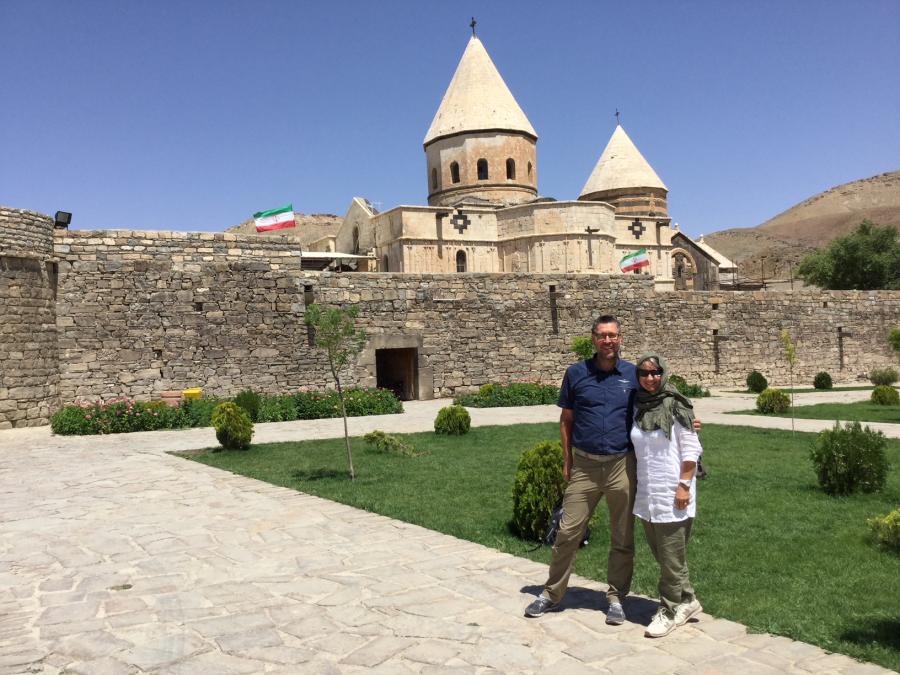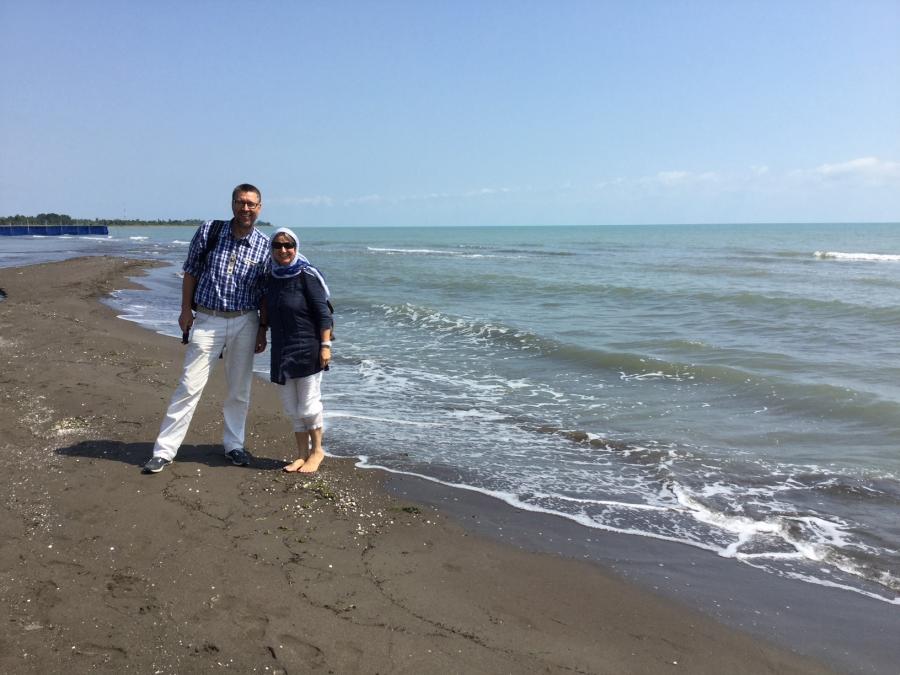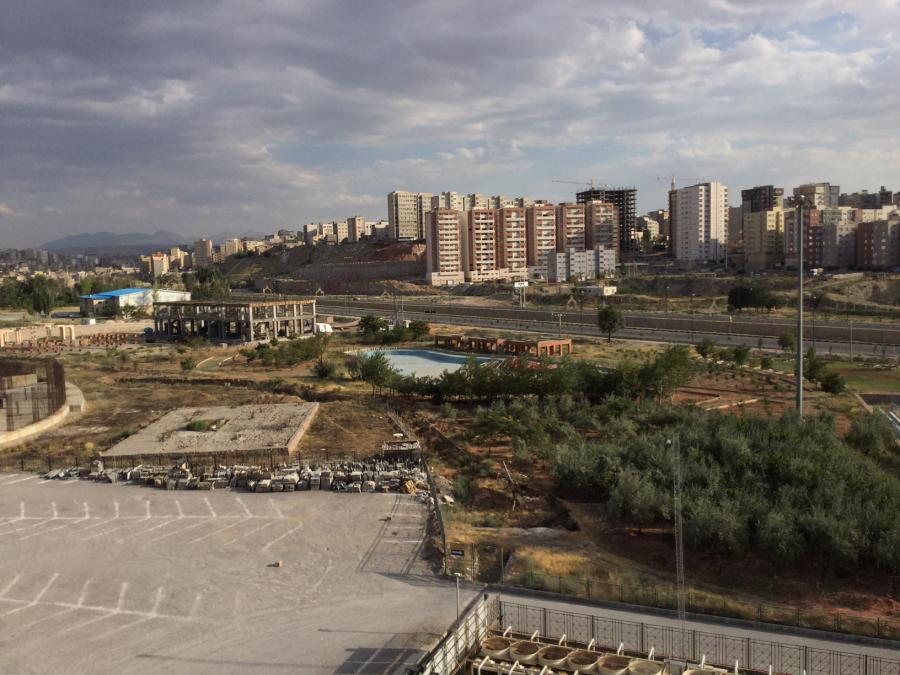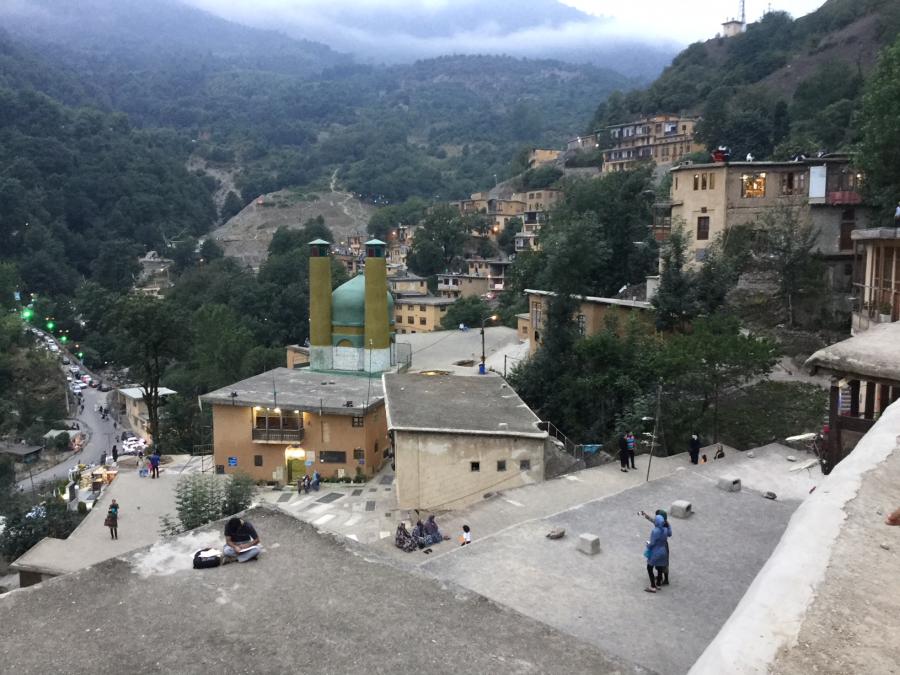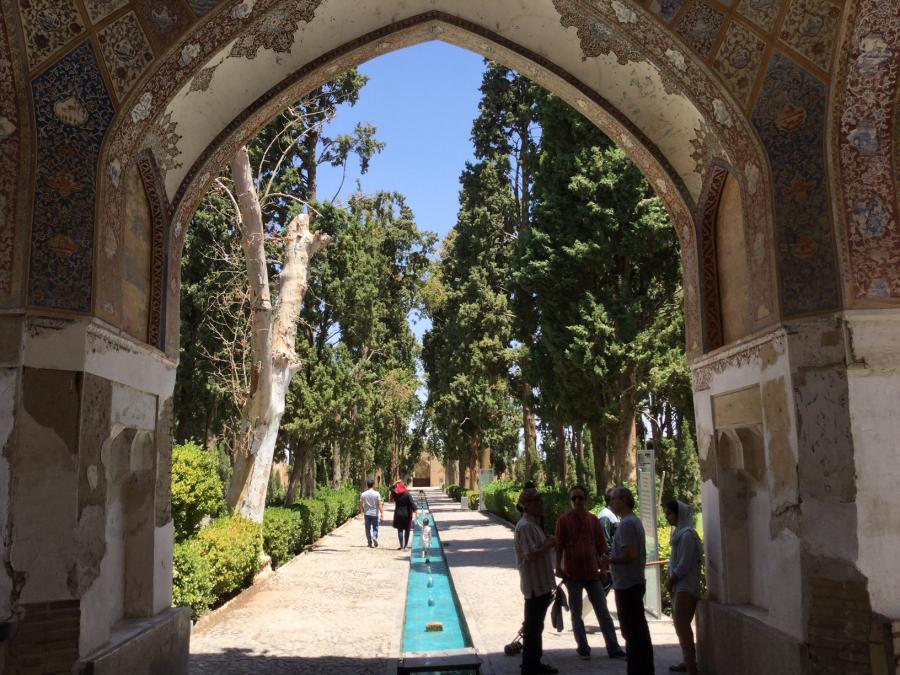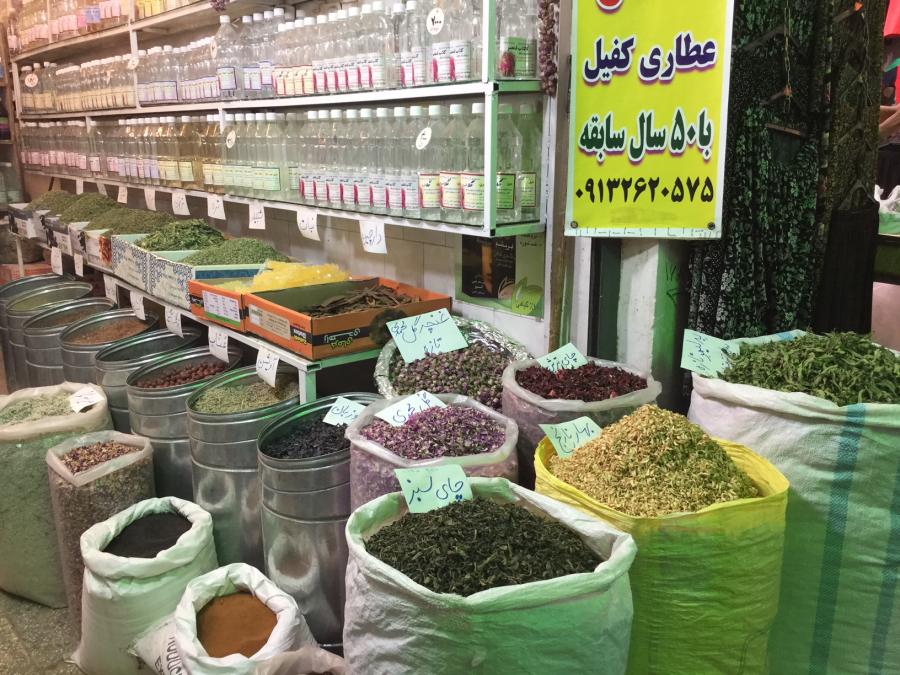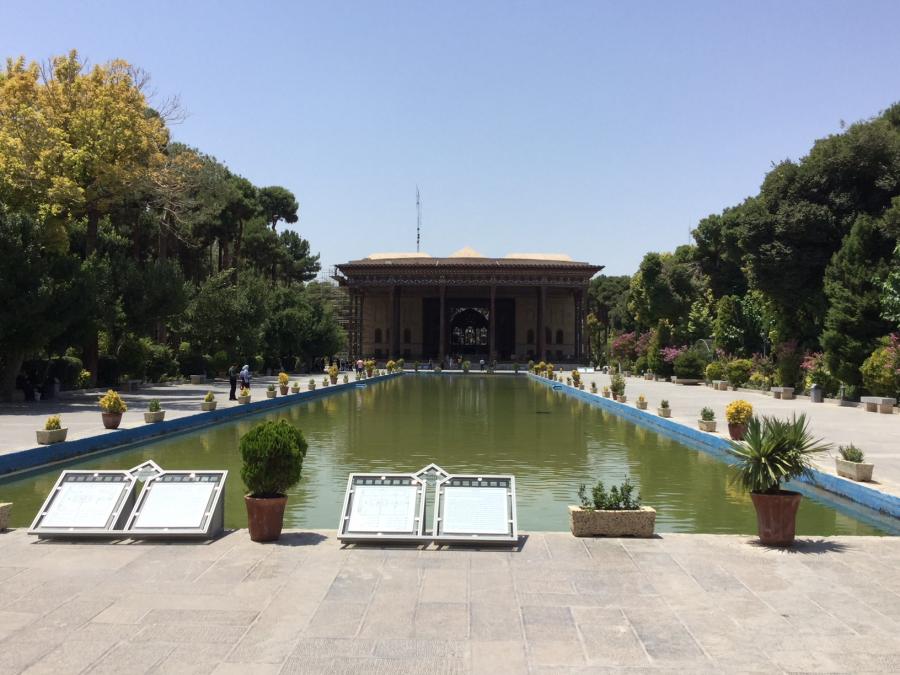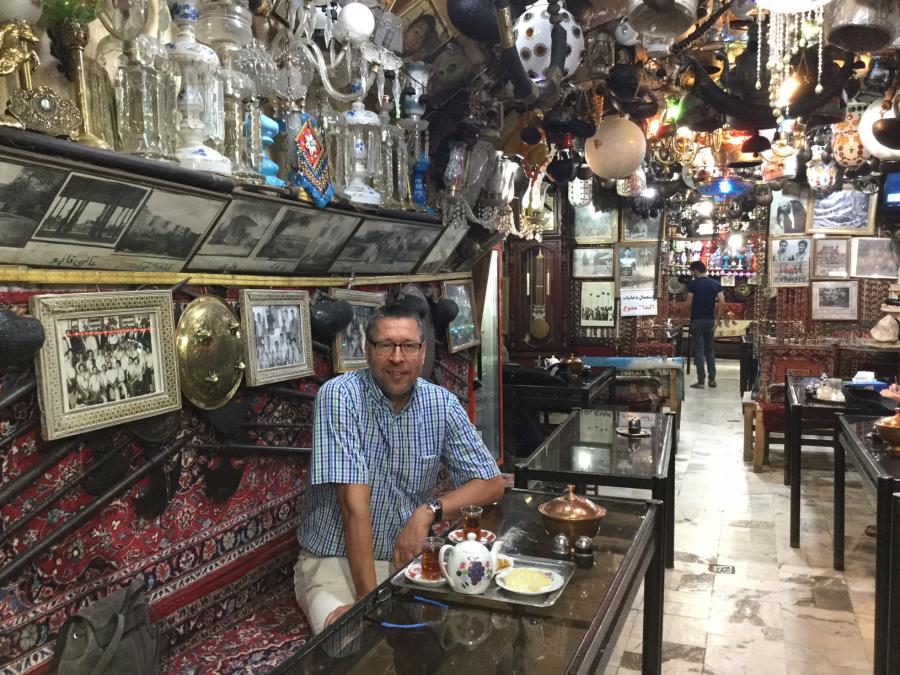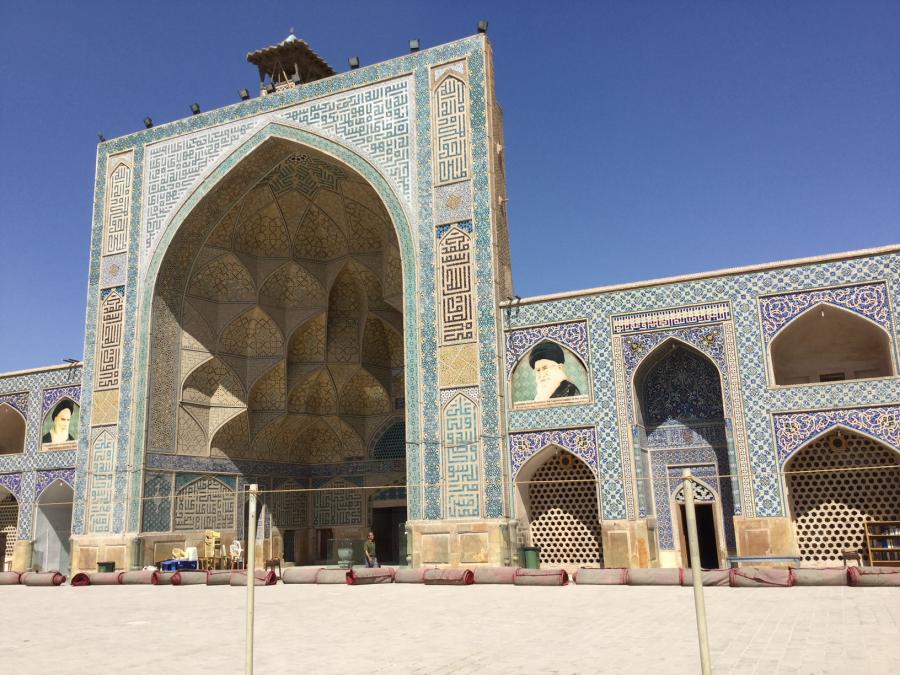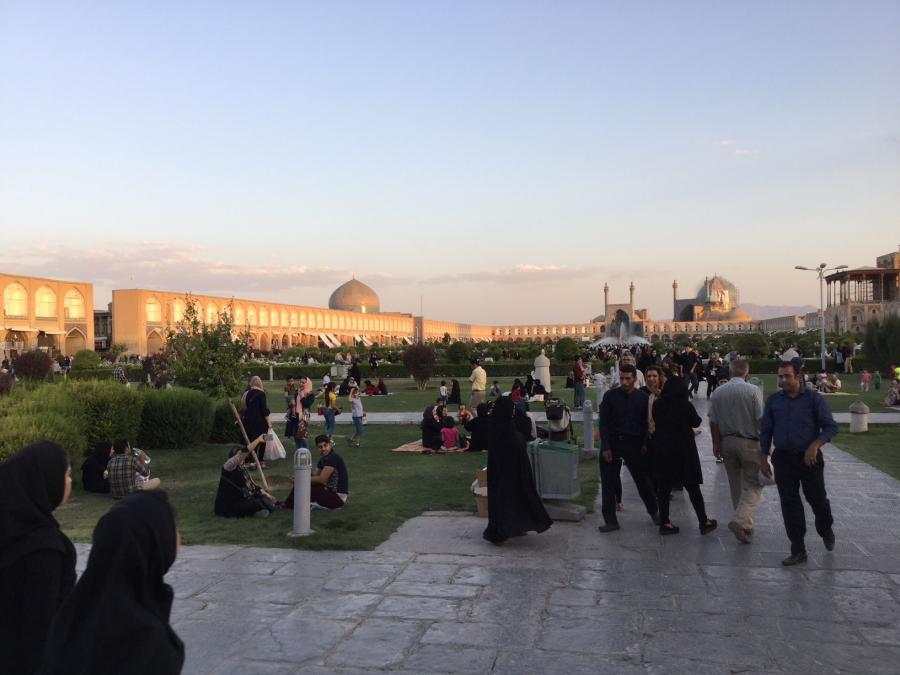Iran – Persia
Thousands of years of culture on the former Silk Road
von 31.07.2017 bis 07.08.2017
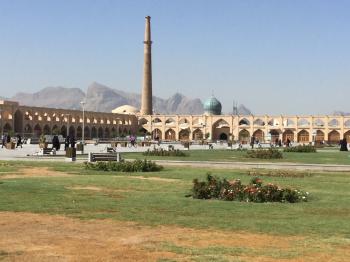
Heimo and I toured Iran with a driver-guide and drove with Amir from Isfahan to the Armenian border,
a total of 1,300 km.
Isfahan – Magic of the Orient:
Once one of the most important trading cities along the Silk Road, the city is located at 1600 m and has a pleasant, dry climate even in hot summer days (up to 40 degrees).
The city shows many old cultural sites, so we can visit only the most important ones in 2 days.
We start the tour with Amir at Imam Square, which was laid out by Shah Abbas I in 1602 and is a UNESCO World Heritage Site. After Beijing’s Tiananem Square, it is the largest and one of the most beautiful squares in the world.
At sunset, hundreds of people gather here, sitting, talking, eating and
enjoy the cooling evening into the night.
There are many mosques in Isfahan. We visit the Imam Mosque, a masterpiece of Islamic architecture, built 1611-1630.
Continue to Lotfullah Mosque, built 1602-1619, which was the private mosque of Safavid royal families.
Women were allowed there and it was therefore called a women’s mosque.
Not to be missed is Ali Qapu Palace, built in 1597 by Shah Abbas I. The view at the top of the tower over the oriental city inspires us. Isfahan offers many green places, although it is located in the middle of a desert area.
A trip to the Jame Mosque must not be missed the next day. It is the oldest mosque in Iran. Already in the 8th century. a simple pillared hall mosque was built.
At the end of the day we visit the bazaar with its cheerful hustle and bustle.
Tip: Visit the traditional tea house Azedagan, a must when in Isfahan.
Kashan – carpet production and rose water production:
The drive to Kashan, which is located in the middle of the desert, takes half a day. The thermometer shows 36 degrees and we search
the shady places in Fin Garden, a popular destination for Iranians. The flowing water in the man-made canals and the richly decorated fountains bear witness to how precious water is in these hot areas.
Already in the 6th century. is said to have been a garden complex here. This makes it the oldest in Iran.
Carpets were produced in Kashan for many years. Even today, all industrially manufactured
Carpets for Iran produced in the 200 factories.
Tip: Oriental accommodation at Manouchehri Tradiontionell House.
Masouleh – idyllic mountain village:
The drive to Masouleh is 615 km and we sit in the well cooled car all day. The landscapes change several times, making the ride entertaining. The village with its ocher-colored mud-brick houses is nestled on a mountainside. The houses are terraced; the flat roofs often serve as walkways for the buildings above.
The air is cooler and many Iranians like to travel here. We experience this firsthand. Hundreds of people try to get to the village via the narrow mountain road. Soon the cars stop and for a while nothing works.
We are the only foreign tourists, are friendly addressed by young people.
A joint photo must not be missing.
Tip: Visit Masouleh during the week.
Tabriz – modern 1.6 million city in eastern Azerbaijan:
A new travel day is coming. We interrupt the 480 km drive to Tabriz with a short visit to the Caspian Sea.
The journey continues past rice fields, jungle-like forests, along the border with Azerbaijan, which is well secured by high barbed wire fences and many border posts.
The landscape becomes mountainous before changing back to desert terrain after many kilometers.
We are now in the border area of the 3 countries Turkey, Azerbaijan and Armenia.
Tabriz is an important economic trading city. Many Iranians here speak the Turkish language.
1,5 Milllionen Rial costs our dinner; that are converted € 35,–. We feel like millionaires.
Tip: Overnight stay in the newly built *****Hotel – Kaya Laleh Park.
Thaddeus and Stephanos Monastery – the oldest Armenian monasteries in the border area of Iran:
The way to the Thaddeus Monastery leads along narrow roads, and although we have a good road map, we still need the help of a shepherd until we find the place. We walk on very old, historical traces.
The church of the Thaddeus Monastery, which has been uninhabited for a long time, is also called the Black Church. According to Armenians, it is the oldest church in the world. In 65 A.D. it was built by the apostle Jude Thaddeus.
In the 13th century. it was rebuilt after an earthquake.
On the way we see again and again at the roadside farmers who sell their melons, and we get gusto on the refreshing fruit. In no time, Amir organizes melon, fresh pita bread and feta cheese in a small street store.
It tastes delicious.
We reach the Stephanos monastery, thanks to a good road map and navigation by Heimo in the sweltering afternoon heat.
at 38 degrees. The monastery, which was built right on the border with Azerbaijan, extends over several buildings.
Both monasteries are being restored in stages by the Iranian government and are UNESCO World Heritage Sites.
Jolfa and the Norduz Pass – land border crossing to Armenia:
Our destination today is the border town of Jolfa.
After an overnight stay Amir takes us to the Norduz Pass at the Armenian border.
We say goodbye to our guide, who made sure that we see his country, Iran,
with many beautiful experiences and desire for further journeys in memory will keep.
Brigitte Wallner









